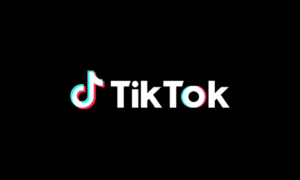In a world where technology rapidly evolves and communication is key, staying on top of the latest tools and techniques is crucial for modern professionals. Whether you’re a seasoned executive or just starting out in your career, understanding the different types of communication tools available can make all the difference in how effectively you connect with others. From email to video conferencing, instant messaging to project management platforms, this comprehensive guide will navigate you through the vast landscape of communication tools, equipping you with the knowledge necessary to enhance collaboration, streamline workflows, and ultimately boost your professional success.
Introduction to Communication Tools
In today’s fast-paced and globalized business world, effective communication is crucial for success. With the rise of remote work and virtual teams, the need for efficient communication tools has become more pressing than ever before. The modern workplace demands constant connectivity, quick decision-making, and seamless collaboration, all of which are made possible through various communication tools.
Communication tools refer to any software or platform that facilitates the exchange of information between individuals or groups. These tools have revolutionized how we connect and interact with one another in both personal and professional settings. From emails to video conferencing, there are numerous types of communication tools available today. In this blog post, we will discuss the importance and relevance of these tools in the modern workplace.
Types of Communication Tools:
In today’s fast-paced and interconnected world, effective communication is more important than ever. With the rise of technology and globalization, professionals are now able to communicate with colleagues, clients, and partners from all corners of the globe. However, with so many different types of communication tools available, it can be overwhelming to determine which one is best suited for your specific needs. In this section, we will explore the various types of communication tools that are commonly used in modern workplaces.
1. Email:
Email has become a staple in business communication. It allows for the quick and efficient transfer of information between individuals or groups. With email, you can easily send messages and attachments, such as documents or images, and receive responses in a timely manner. One of the major advantages of email is that it provides a written record of conversations that can be referred back to if needed.
2. Instant Messaging:
Instant messaging (IM) has gained popularity as a real-time alternative to email. It enables users to exchange text messages instantly and have a conversation in real-time through online chat platforms like Slack or Microsoft Teams. IM is particularly useful for quick questions or updates within teams and departments without having to send formal emails.
3. Video Conferencing:
Video conferencing allows people from different locations to connect face-to-face over live video feeds using tools like Zoom or Skype for Business. With the rise of remote work and virtual teams, video conferencing has become an essential tool for conducting meetings, presentations, or interviews remotely.
4. Audio Conferencing:
Audio conferencing allows multiple people to participate in a conversation over the phone. It is often used for conference calls or group discussions when participants are not able to physically meet in one location.
5. Project Management Tools:
Project management tools, such as Trello, Asana, or Basecamp, help teams collaborate and keep track of tasks and projects. These tools allow for real-time updates, assigning tasks to team members, organizing project timelines and deadlines, and tracking progress.
6. Collaboration Platforms:
Collaboration platforms like Google Drive, Microsoft Sharepoint, or Dropbox provide a central location for teams to store and share files. These tools allow multiple users to access and collaborate on documents in real-time, making it easier to work together on projects remotely.
7. Social Media:
Social media has become an important communication tool for businesses to connect with their customers and promote their brand. Platforms like Facebook, Twitter, and LinkedIn are commonly used for marketing purposes but can also be utilized for internal communication within organizations.
8. Intranet:
An intranet is a private network that is only accessible to employees of a company or organization. It serves as a central hub for accessing company resources such as policies, procedures, news updates, and other important information.
Traditional Methods:
Traditional methods of communication refer to the age-old practices that have been used by individuals and organizations for centuries. Despite the advent of technology and modern communication tools, these traditional methods still hold value in today’s fast-paced world. In this section, we will explore some of the most commonly used traditional communication tools.
1. Face-to-Face Communication:
This is perhaps the oldest and most effective form of communication. It involves direct interaction between two or more people who are physically present in the same location. This method allows for personal connections to be made, making it ideal for building trust and understanding between individuals.
Face-to-face communication can take place through various means, such as one-on-one meetings, group discussions, or even informal conversations over lunch or coffee. It allows for immediate feedback and clarification, making it a preferred method for important discussions or negotiations.
2. Written Communication:
Written communication has been around since ancient times and remains an essential tool in today’s world. It involves conveying messages through written words on paper or electronic documents such as letters, memos, reports, emails, etc.
Written communication offers several advantages, such as providing a record of the conversation that can be referred back to at any time, ensuring clarity and accuracy of the information being conveyed, and allowing time for careful thought before responding.
3. Telephone:
The invention of the telephone revolutionized long-distance communications when it was first introduced in 1876 by Alexander Graham Bell. Even with advancements in technology like video conferencing and instant messaging, the telephone remains a popular method of communication in both personal and professional settings.
It allows for real-time conversations between individuals, making it ideal for urgent matters or situations where face-to-face interaction is not possible. It also allows for quick decision-making and problem-solving.
4. Postal Mail:
Before the age of email and instant messaging, postal mail was the primary mode of communication between individuals and organizations. While its usage has declined significantly, it still remains a valuable tool in certain situations.
Postal mail provides a physical copy of documents that can be kept as a record, making it useful for legal or official communications. It also has a personal touch that electronic communication may lack.
Artificial Intelligence Assistants for Communication
Artificial intelligence (AI) is rapidly transforming the way we communicate in our personal and professional lives. One of the most significant advancements in this field is the development of AI assistants for communication. These digital assistants have revolutionized the way we interact with technology, making communication quicker, more efficient, and personalized.
So, what exactly are AI assistants for communication? Simply put, they are virtual agents or bots designed to assist us in our daily communication tasks. These intelligent tools use natural language processing (NLP), machine learning (ML), and other advanced technologies to understand human speech patterns and respond accordingly.
There are various types of AI assistants available for different purposes, but when it comes to communication, there are two main categories: voice-based and text-based. Let’s take a closer look at each type to understand how they can enhance our overall communication experience:
1. Voice-Based AI Assistants:
The most well-known voice-based AI assistant is Apple’s Siri, followed by Amazon’s Alexa and Google Assistant. These digital assistants use voice recognition technology to understand commands or questions spoken by users and provide quick responses or perform specific tasks such as setting reminders, making calls, sending messages, etc.
Apart from these popular names, there are also enterprise-level voice-based AI assistants like Zoom.ai that cater specifically to business communication needs. They can schedule meetings based on your availability, book conference rooms, and even take notes during meetings.
Conclusion
Effective communication is crucial in any professional setting. By understanding the various types of communication tools available and utilizing them appropriately, modern professionals can enhance their communication skills and improve their overall productivity. It is also important to consider the audience and purpose of communication when choosing which tools to use. Additionally, technology is constantly evolving, so it is essential for professionals to regularly update their knowledge and skills when using these tools.



































